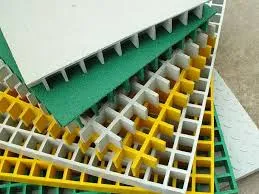loading...
- No. 9, Xingyuan South Street, Dongwaihuan Road, Zaoqiang County, Hengshui, Hebei, China
- admin@zjcomposites.com
- +86 15097380338
- Welcome to visit our website!
frp trench drain
The Importance of FRP Trench Drains in Modern Infrastructure
In the ever-evolving landscape of urban development and infrastructure management, effective drainage systems play a crucial role in maintaining both functionality and safety. One of the most innovative and efficient solutions available today is the Fiberglass Reinforced Plastic (FRP) trench drain. As cities grow and environments change, the demand for durable and reliable drainage solutions is at an all-time high. This article explores the advantages of FRP trench drains, their applications, and why they are becoming the preferred choice in various construction projects.
What is FRP?
Fiberglass Reinforced Plastic (FRP) is a composite material made from a polymer matrix reinforced with fibers. The unique properties of FRP, including its resistance to corrosion, high strength-to-weight ratio, and low maintenance requirements, make it an ideal choice for constructing trench drains. These features help to ensure long-term performance in a variety of environmental conditions.
Benefits of FRP Trench Drains
1. Corrosion Resistance One of the most significant advantages of FRP trench drains is their inherent resistance to corrosion. Unlike traditional materials such as metals or concrete, FRP does not rust or deteriorate when exposed to harsh chemicals, salts, or water. This makes it especially suitable for use in industrial environments, wastewater treatment facilities, and coastal areas where corrosion is a major concern.
2. Lightweight and Easy to Install FRP is considerably lighter than traditional materials, which simplifies transport and installation. This lightweight characteristic allows for reduced labor costs and less heavy machinery during the installation process. Engineers can easily manipulate FRP components on-site, thereby speeding up the construction timeline.
3. Customizable Design FRP trench drains can be designed and manufactured to meet specific project requirements. Whether it’s adapting to varying terrain or accommodating unique architectural elements, the flexibility of FRP allows for customized solutions that traditional materials may not provide. This adaptability is essential for modern construction practices, where standardization must often be balanced with customization.
4. Sustainability With a growing focus on environmental sustainability in construction, FRP trench drains showcase a marked improvement over traditional materials. The longevity of FRP materials reduces the need for frequent replacements, resulting in less waste and lower overall resource consumption. Additionally, many FRP products are recyclable, further minimizing their impact on the environment.
frp trench drain

5. Cost-Effectiveness Though the initial investment in FRP trench drains may be higher than that of traditional options, the long-term savings can be substantial. Their durability and low maintenance needs translate to reduced lifecycle costs and fewer disruptions over time.
Applications of FRP Trench Drains
FRP trench drains are versatile and can be applied in various settings, including
- Industrial Facilities In factories and warehouses, where spills of heavy chemicals or oils may occur, FRP trench drains offer an efficient way to manage these substances safely.
- Commercial Spaces Shopping malls, parking lots, and outdoor entertainment areas benefit from the aesthetic appeal and reliable performance of FRP trench drains, ensuring proper drainage without compromising design.
- Transportation Infrastructure Highways, airports, and railways often require robust drainage systems to handle large volumes of water quickly and efficiently. FRP trench drains provide the necessary strength and resilience in these demanding environments.
- Residential Areas Homebuilders are increasingly recognizing the benefits of FRP trench drains for managing surface runoff and preventing flooding, thus enhancing property value and safety.
Conclusion
As cities continue to grow and evolve, the need for reliable and effective drainage systems becomes increasingly critical. FRP trench drains represent a modern solution to complex drainage challenges, offering corrosion resistance, lightweight construction, customizable designs, sustainability, and cost-effectiveness. By adopting this innovative technology, we not only improve drainage efficiency but also contribute to the longevity and safety of urban infrastructures. As awareness and understanding of FRP technology expand, we can expect to see it becoming a standard in drainage solutions across various sectors.
-
The Rise of FRP Profiles: Strong, Lightweight, and Built to LastNewsJul.14,2025
-
SMC Panel Tanks: A Modern Water Storage Solution for All EnvironmentsNewsJul.14,2025
-
GRP Grating: A Modern Solution for Safe and Durable Access SystemsNewsJul.14,2025
-
Galvanized Steel Water Tanks: Durable, Reliable, and Ready for UseNewsJul.14,2025
-
FRP Mini Mesh Grating: The Safer, Smarter Flooring SolutionNewsJul.14,2025
-
Exploring FRP Vessels: Durable Solutions for Modern Fluid HandlingNewsJul.14,2025
-
GRP Structures: The Future of Lightweight, High-Performance EngineeringNewsJun.20,2025
